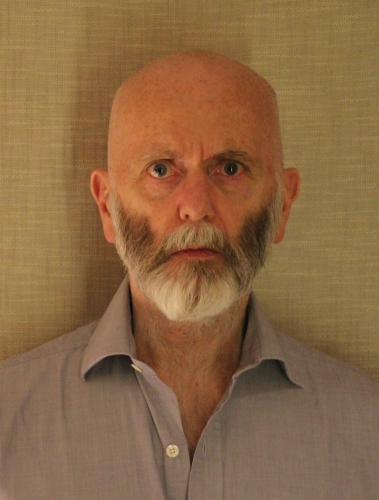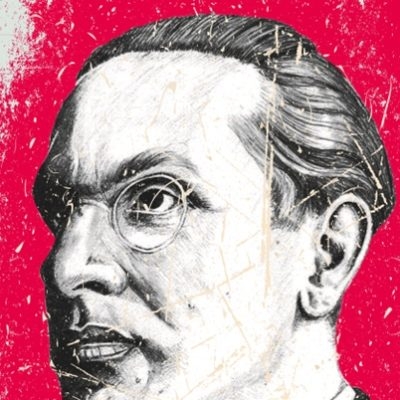 Review:
Review:
Philippe-Joseph Salazar
Suprémacistes: L’enquête Mondiale chez les Gourous de la Droite Identitaire
Paris: Plon, 2020
This book results from interviews with leading thinkers of the race-conscious right — the so-called alternative right — which seeks to bring race to the forefront of political debate. The title Suprémacistes is, however, misleading; for the author, Philippe-Joseph Salazar, nowhere describes the people who are the subject of this study as supremacists, nor do they describe themselves as such. The title was probably chosen for marketing reasons and is more likely to be the publisher’s choice than the author’s.
In his prologue (p. 9) Salazar declares that throughout this study he always played with an open hand. He told his interlocutors that he was not a journalist, since journalists are treated with strong distrust and a hands-off policy, but they were apparently intrigued when he told them that he was a philosopher and rhetorician at the University of Cape Town, “in the country of Nelson Mandela.” The reader soon realizes that Salazar likes to indulge in the occasional rhetorical flourish. The subjects he has picked out for his interviews he describes as
a global circle of intellectuals. Of a special kind: the militant intellectual. Their adversaries call them “supremacists” and even if some of them strongly reject the label, these gurus or mentors of white identity have succeeded in captivating, inspiring, and enthralling new generations with their arguments. Like political Islam, a new ideology after a long incubation is rising above the horizon of Europe and the United States. (p. 9)
The phenomenal success around the world of the expression “great replacement” forged by the French writer Renaud Camus. . . is a sign among a thousand other signs: race is returning to the forefront of the political arena. We are on the threshold of an ideological upheaval. This book investigates and describes the vanguard. (p. 11)
Notable at once is the writer’s objectivity, if not sympathy, to the subject of his study, a welcome change to the usual “investigative journalism” whose purpose is to seek out, subvert, damage, and if possible, destroy.
But who is Philippe-Joseph Salazar? Is he the man for the task he describes?
 Salazar had written on various relatively obscure subjects before achieving fame with the 2015 publication of his reports on ISIS, Paroles Armées (Armed Words). His specialist field of study is rhetoric: how the power and associative imagery of words can be used as a tool in appropriating or resisting power. Rhetoric as a legitimate democratic tool recalls the sophists who marketed their skills in Ancient Athens to ambitious politicians and were lambasted for so doing by Socrates. Salazar seems interested in words less as tools to discover the truth than as tools in a struggle to gain ascendancy.
Salazar had written on various relatively obscure subjects before achieving fame with the 2015 publication of his reports on ISIS, Paroles Armées (Armed Words). His specialist field of study is rhetoric: how the power and associative imagery of words can be used as a tool in appropriating or resisting power. Rhetoric as a legitimate democratic tool recalls the sophists who marketed their skills in Ancient Athens to ambitious politicians and were lambasted for so doing by Socrates. Salazar seems interested in words less as tools to discover the truth than as tools in a struggle to gain ascendancy.
Salazar’s career seems to have been somewhat unusual. His advisor at the elite École normale supérieure was none other than the hard-line Marxist intellectual Louis Althusser, who is best remembered by many not for his heavy theoretical tomes but as the man who strangled his Jewish wife, the former resistance partisan Hélène Rytmann, in 1980. Salazar dedicated his book Le culte de la Voix (The cult of the voice) jointly to Roland Barthes, the philosopher famous for his studies of the power of signs and the meaning of structures, and the philologist and expert on proto Indo-European social structures, Georges Dumézil. This is significant because it implies a certain dual “Left” and “Right” heritage in Salazar’s own perception of the structure of language and role of rhetoric in contributing to the effectiveness and legitimacy of argument and persuasion. Barthes believed that art should be critical and interrogate the world rather than seek to explain it. This reluctance to explain very much or very far characterizes Suprémacistes.
If Philippe-Joseph Salazar insists that he is not a journalist, judging by this book he is no philosopher either. His book, consisting of a series of interviews and scene sketches, reads like a field study, and his approach is less that of a philosopher as of an anthropologist, one open to the mores and customs of the tribe he is studying without prejudice. But Salazar is also disengaged, free of any form of subjective or emotional engagement with them as well.
This book is a collection of portraits of people whom the reporter considers to be “gurus” (his word) of the alt- or Identitarian Right. The subtitle of the book, which I suspect was Salazar’s own choice, is L’enquête Mondiale chez les Gourous de la Droite Identitaire, World Survey of the Gurus of the Identitarian Right. The people whom he interviews he describes as “militant intellectuals.” It is their enemies, Salazar says, who call them white supremacists — the label “supremacist” being applied to white identitarians for the purpose of marginalizing and discrediting them.
The book is composed of eighteen chapters; these are vignettes, mostly in the form of interviews, with people chosen by Salazar (according to what criteria, if any, the reader is not told) as leading representatives of the white identitarian vanguard, the alt-right.
In each chapter, Salazar describes, often humorously, his interview with an Identitarian Right “guru.” The table of contents does not name his interviewees directly. That would be too simple for a pupil of Roland Barthes. Instead, the chapter headings are clues, similar to clues in a crossword puzzle. The reader might guess or not whom or what each title refers to. Here are half a dozen examples followed by the answers.
- “White Kung-fu” (John Derbyshire)
- “What comes from outside stays outside” (Jared Taylor)
- “France on the alt-right horizon” (François Bousquet)
- “Plato among the Vikings” (A meeting organized by Scandza)
- “A Croatian Cosmopolitan” (Tomislav Sunic)
- “A Global White Nationalist” (Greg Johnson)
 From this alone the reader can see we are far from the earnestness of the usual “investigative reporter.” There is a lightness about this inquiry, a certain half-suppressed amusement which gives a very great advantage and a very great drawback to the study.
From this alone the reader can see we are far from the earnestness of the usual “investigative reporter.” There is a lightness about this inquiry, a certain half-suppressed amusement which gives a very great advantage and a very great drawback to the study.
The advantage of Salazar’s light touch is that he is the more easily able to remain scrupulously fair, genuinely disinterested, and determined to hear what his interlocutors have to say without interruption or interrogation: Those views, so far as I can judge, are fairly and accurately reported. The drawback of this approach — and it is a considerable one — lies in the fact that a scrupulous hands-off “I am not here to judge” approach stifles the chance for disagreement and altercation. There is no productive examination of ideas here, no awkward questions, no profound study or analysis. Salazar seems more interested in the people he interviews as people, as types, as representatives of a movement, than he is in the substance of their message. As a good pupil of Roland Barthes, Salazar is receptive to the signs, catchphrases, and gestures that characterize the persons he interviews, but his sensitivity is achieved at the cost of being able to provide any political gravitas to his commentaries. In a word, Salazar’s interviews are lightweight.
When I was younger, I often used to travel by hitchhiking. Usually, the person giving me a lift would be loquacious, expecting me to listen sympathetically to what they had to say. (I was once terrifyingly told by an old and portly driver: “I don’t normally give lifts but I am feeling extremely tired. I need someone to keep me awake.” I subsequently twice prevented him from dozing off.) Salazar gives this impression. He gives his interlocutor every chance to say what he (or in just one case, she) might wish to say and he prods the conversation along when it drags (and evidently, some of them do) by the occasional courteous question or interjection. They more or less amuse him. Statements are made galore, but there is little discussion worthy of the name, let alone debate. After a short time the interview, to the greater or lesser satisfaction of both parties, is closed, and it is time for Salazar to move on. All the interviews except one are in person interviews. The exception is the interview with Keith Woods which had to be conducted via Skype, owing to virus restraints (p. 196).
In sharp contrast to mainstream investigative reporters, Salazar is unfailingly courteous, and while it is natural that he will personally like some of the interviewees more than others, be more impressed by some people than others, his observations are never disparaging, with one exception: “France on the horizon of the alt-right.”
The book is copiously supported by references, most of them to internet sites. The alt-right, the intellectual dark net, social media, blogs, these and more point to a new kind of information where entertainment and alacrity have gained new importance. The people whom Salazar talks with may be intellectual militants, but the format of the book and Salazar’s own approach gives them little opportunity to flourish. The chapters are not so much intellectual outlines as casting show contestants performing to see how many points Salazar will award them. The Right Wing’s Got Talent would have been a more accurate title for this book than Supremacists. The people whom he talks to are appraised by Salazar not in terms of their intellectual prowess, but in terms of their media impact factor. Can you wow Salazar? What impression do you make, how successful is your message, how up-to-date are you? How many followers do you have on YouTube? Do young people quote you? Are you quotable? Say something clever about Hegel in one sentence. Show that you have read Marx. How well known are you? Do you have memorable phrases at the drop of a hat? If so, let’s have one, now! Here is the judge’s score: Jared Taylor: Appearance 8 out of 10, ability in repartee, 5 out of 10; John Derbyshire: Appearance 5 out of 10, ability in repartee 7 out of 10, and so on.
 Here is an example of Salazar’s showmanship approach. This is how the chapter entitled “A Cosmopolitan Croatian” begins:
Here is an example of Salazar’s showmanship approach. This is how the chapter entitled “A Cosmopolitan Croatian” begins:
I would have preferred to speak with Tomislav Sunic in Zagreb where he lives, but the exorbitant cost of a return ticket from Munich and the delightful thought of spending just two hours sitting in an airport café put me off the idea. Besides, Tomislav Sunic was one of the star guests at the upcoming identitarian conference in Copenhagen. Why miss the opportunity?
But we get off to a very bad start. The Croatian philosopher, with his silhouette of a patrician academic, arrives looking a little run down in this restaurant situated in a snug mezzanine of the Voldgate, called the Tivolihallen, which I had picked out myself, having arrived in Copenhagen the same morning after twenty hours of traveling. Sunic got up at four in the morning to take the plane from Zagreb and he is irritable.
Rejecting the recommendations of the day, he asks for a soup from the waiter. The waiter makes a sign to the jovial manager, who explains in French to me that it is not customary for people to drink soup in Denmark. Sunic sighs, goes over to English, and orders water, immediately. So he drinks water and I have a large glass of Chardonnay. This performance takes a while and says something about the character of the Croatian philosopher. He has a firm opinion of himself and his tastes. (p. 169)
“Cosmopolitan Croatian.” Salazar likes such monikers and descriptive phrases to sum someone or something up. Keith Woods is a “millennial philosopher and radical icon of the alt-right Web” whose lapidary statement “is in the style of Saint-Just.” (p. 204) John Derbyshire has the “look of the guy next door.” (p. 95) Jared Taylor “makes a good impression with his regular features of an American actor from the 50s.” (p. 73)
 A chapter with more substance than many is “A Global White Nationalist” (English in the original), Salazar’s talk with the editor of Counter-Currents, Greg Johnson. Johnson’s clear aims are outlined. A question and answer session ensues on page 183 which reminded me of a Roman Catholic catechism recital.
A chapter with more substance than many is “A Global White Nationalist” (English in the original), Salazar’s talk with the editor of Counter-Currents, Greg Johnson. Johnson’s clear aims are outlined. A question and answer session ensues on page 183 which reminded me of a Roman Catholic catechism recital.
Q: What is ethnonationalism?
A: Ethnonationalism is the idea according to which each distinct ethnic group should enjoy political sovereignty and a homeland or ethnically homogenous homelands. Opposed to this is multi-culturalism, which affirms that multiple ethnic groups should share the same homelands and governments.
Q: What is white nationalism?
A: White nationalism is a political philosophy which seeks to define national identity in racial terms rather than in terms of religion, culture, or religious faith. White nationalism makes more sense in the context of colonial European societies such as the United States, in which the older white ethnic identities have been weakened by intermixing of immigrant stock, thereby creating an ever more united white generic identity.
Johnson’s contrast between a race-centered identity in the US and a more nation-centered identity in Europe is important. It could have lead to a discussion on the role of ethnicity and nation and even ethnicity opposed to nation, both in rhetoric and in political loyalties. Salazar does not record any such discussion. He moves right on to his next question, asking Johnson what the North American New Right is and how it differs from the European Old Right and European New Right. (p. 184) Clearly, earnest debate and examination of beliefs is not the purpose of this book.

In his talk with Jared Taylor, Taylor explains why he is not a supremacist, but rather one who seeks to maintain a white racial identity and not lordship over others, an identity which will be reflected in a white community in which “everybody, left or right, libertarians, gays, poor and rich are part of the family,” and “there is no alternative for us to the fate of being white.” (pp. 82-83) This surely invites the question: why is race of such overriding importance to Jared Taylor? And is the community which he aspires to and which Salazar notes as “obviously lacking” in the area where Taylor himself lives a matter of race alone? What other factors play a role in creating social cohesion and what is their importance vis-à-vis ethnic identity? Salazar does not ask him. At the end of the discussion, Salazar wonders:
How would I ever get out of this residential suburb where everything looks the same if my GPS broke down? Where is the community that Jared Taylor is talking about, where are the poor folk and classless types belonging to “his family”? Where is this American Europe? Will it be found in a new Secession, this time a Secession strictly racial? (p. 82)
Salazar then provides a footnote referring the reader to an article by F. H. Buckley in American Renaissance, which Jared Taylor edits, entitled “Is it Time for Secession?” (p. 82) Salazar poses a question to himself and to the reader which it seems he did not put to Jared Taylor. Such “debate that wasn’t” characterizes his book.
One chapter of Suprémacistes, “France on the Horizon of the alt-right,” abandons both the character portrait approach and open-mindedness. It begins with a style to which the reader will have become accustomed: “So I go to Paris. I have an appointment in the rue des Médicis with the manager of the bookshop La Nouvelle Librairie, Francois Bousquet (born in 1968), opposite the Jardin du Luxembourg.” (p. 205) But Bosquet has only an hour for our researcher and nearly all the chapter is taken up not with his interview with Bosquet — which must have been disappointing, since he has little to say about it — but with his own speculation on the Nouvelle Droite (New Right).

How many under fifty years of age, muses Salazar, remember when or how the Nouvelle Droite appeared? (p. 205) Not many, obviously. Anybody fifty years old at the time this book was published was about seven when Alain de Benoist first coined the term during a radio interview, so indeed nobody under fifty will remember the interview from the time. Perhaps Salazar is wondering how many people know the history of the Nouvelle Droite. But it is probable that not many people under fifty years old do so either. Does this matter? In the only chapter in which Salazar is disposed to wonder how a contestant could have made it so far on his show, he criticizes the disorder of Bosquet’s bookshop and the low quality of the wares:
Packets of reviews from the 1950s, yellowing Montherlants, not the best; Morand and Drieu la Rochelle, I think, I could make out in the obscurity of the shelves, pamphlets by Maurras, various bulletins, finally, numerous forgotten books by the collaborator Jacques Chardonne.” (p. 211)
He notes that the French New Right does not seem very “new” half a century on. He points out to the reader that the bookshop is located at the premises of the 1930s headquarters of the fascist Action Francaise. Musing upon his encounter, he reiterates a common criticism of the French New Right in general and against Alain de Benoist specifically, that followers are aloof, overly cautious, too academic, reluctant to get their hands dirty, that they are in a bubble, provincial, more concerned with their reputation than with the future of the world.

Salazar draws a stark contrast with Guillaume Faye, the fiery orator who broke from GRECE (the flagship club of the French New Right) in 1986 and who has had much more impact beyond France than Alain de Benoist. Alain de Benoist does not have what Salazar calls “impact factor.” This reviewer well remembers Guillaume Faye from the early days of GRECE. Faye certainly had “impact” factor. His speeches always ended with standing ovations. Salazar associates only one rhetorical slogan to Alain de Benoist’s name, the expression “Nouvelle Droite” (New Right) itself, first uttered in a radio interview with Jacques Chancel. So keen is Salazar to prove his point that this New Right now looks old and moth-eaten that Salazar quotes Bosquet without noting an important point:
He ends his tirade about “the intellectual war,” a grandiloquent turn of phrase from metapolitics, dear to the Anglo-Saxon New Right and the German alt-right, although they are more restrained in the way they use it. He wants his bookshop to be an arsenal in this war of ideas and sums it up in these words: The cultural Left has ceased to be creative. It lives by subvention. We live by subversion. (p. 214)
“They live by subvention. We live by subversion.” Is that not the very sort of expression one might expect Salazar to admire? Bosquet has just made the telling point that in media wars the liberal Left is living on financial life support. With the advent of the internet, the daily newspapers are no longer profitable. This is indeed a hugely significant development that has taken place over the last dozen years or so. They have lost advertising copy and subscribers and only survive from the donations of occult backers and/or the taxpayer. The official broadcasting services of the state are under attack. In Britain, there is a vociferous campaign to defund the BBC. Salazar does not pick Bosquet up to pursue the point. However, he draws the conclusion from his discussion with the manager that everything is “singularly restrained, poor in fact. . . It is all very Franco-Parisian. A little mummified?” (p. 215) “The Nouvelle Librairie more resembles an Egyptian mausoleum erected to the glory of the master of the house preserved as a mummy than a basis for cultural guerillas unburdened by fashionable ideas.” (p. 220)
This does not mitigate the fundamental criticism that the French New Right is aloof, hidebound by a provincialism that will inevitably become more backward-looking the more Paris, a shadow of what it was even forty years ago, is overrun by non-whites who know nothing and care less for French thinkers of the Right or the Left and tourists of all races who are unable to care for thinkers of any race or persuasion.
Salazar points out approvingly that Guillaume Faye burst out of the bubble. His slogans, commitment, and readiness to engage with people won him acclaim in the United States, a nation against which he himself had inveighed with fury in the 1970s and 1980s.

Éléments, the house journal of the French New Right (chief editor Francois Bosquet) passed over the demise of Guillaume Faye in silence, a decision which does it little credit and gives credence to Salazar’s impression that the people around Éléments and Bosquet’s bookshop more resemble an intellectual and artistic club than the band of guerillas Bosquet has in mind. Salazar believes that Faye had two expressions that possess especially strong impact factor: “archeofuturism” and “ethnomasochism.” So Faye, notes Salazar approvingly, is a showmaster, eloquent and charming, who reached out to large audiences of young people and wrote books that are exciting and provocative. True, Faye would not have had the patience needed to produce regular publications, books copiously referenced, countering the arguments of the current system. It is also true that Faye faced subjects such as race and the conflict between ecology and science, which many thinkers and by no means only in the New Right, evade.
The truth is that any association, club movement, and yes, guerrilla movement, needs very different human talents, talents which are never to be found in one individual. For Salazar, however, all that counts is the ability to impact, and impact is assessed in terms of showmanship, power of personality, marketing savvy, pulling the right chords, having the right words to say at the right moment. These are the criteria for scoring points on Salazar’s talent show.

One other thinker whose expression with a momentous impact factor is Renaud Camus, with what Salazar calls the “fetish expression”: la grande remplacement, the great replacement. Camus’ book of that name was published in 2011. The great replacement refers to the replacement of the French people by Muslims. Six years later, the Right-wing demonstrators at Charlottesville were chanting “you shall not replace us!” When queried by Salazar as to why he otherwise often chooses a seemingly obscure vocabulary with which to express himself, Camus makes the not original but always important point that using the lexis of one’s opponent’s choosing is to acknowledge a weakness, to suffer a handicap even before conduct is engaged, to voluntarily abandon the high ground to the enemy. “I am not being politically correct here” is an example, or “I am not racist.”
 Camus’ definition of race is original: cultural apprenticeship plus natural reproduction equals race. This perhaps Evolian notion of race runs counter to the biological rationalist understanding of most North Americans. Salazar visits Camus, a Baron de Charlus character, in his Medieval castle tower in the Gers in rural France. He passes a Peugeot dealership in the middle of the countryside on his way to Camus and enigmatically states that “it should not be.” (p. 244). Salazar is not making a moral judgment here. He means the machine is not appropriate to this setting. Some might argue to the contrary: bringing small industry home to the nation and away from the big cities is too little, too late; it is what would have prevented the land drain that transformed France in the 1950s, 60s, and 70s. Then the question: How should and could regional identity work? Would home industry prove more a blessing or a bane? What of Trump’s insistence on prioritizing home industries in contrast with the EU’s extreme globalism? Salazar has nothing to say on this and presumably does not encourage Camus to say anything about it. Again, we have a debate that wasn’t. Salazar makes it clear that the interview with Camus was a disappointment, albeit the two part on friendly terms. Salazar dismissively asks himself rhetorically how many thinkers of the alt-right have read the book so praised by Camus as a key to understanding the true meaning of racial and cultural replacement, La Grande Peur des bien-pensants (The Great Fear of right-thinking people) by Georges Bernanos? (p. 252) Nevertheless he concedes, seemingly contradicting himself, and citing Barthes, that Camus is right about the evocative power of words:
Camus’ definition of race is original: cultural apprenticeship plus natural reproduction equals race. This perhaps Evolian notion of race runs counter to the biological rationalist understanding of most North Americans. Salazar visits Camus, a Baron de Charlus character, in his Medieval castle tower in the Gers in rural France. He passes a Peugeot dealership in the middle of the countryside on his way to Camus and enigmatically states that “it should not be.” (p. 244). Salazar is not making a moral judgment here. He means the machine is not appropriate to this setting. Some might argue to the contrary: bringing small industry home to the nation and away from the big cities is too little, too late; it is what would have prevented the land drain that transformed France in the 1950s, 60s, and 70s. Then the question: How should and could regional identity work? Would home industry prove more a blessing or a bane? What of Trump’s insistence on prioritizing home industries in contrast with the EU’s extreme globalism? Salazar has nothing to say on this and presumably does not encourage Camus to say anything about it. Again, we have a debate that wasn’t. Salazar makes it clear that the interview with Camus was a disappointment, albeit the two part on friendly terms. Salazar dismissively asks himself rhetorically how many thinkers of the alt-right have read the book so praised by Camus as a key to understanding the true meaning of racial and cultural replacement, La Grande Peur des bien-pensants (The Great Fear of right-thinking people) by Georges Bernanos? (p. 252) Nevertheless he concedes, seemingly contradicting himself, and citing Barthes, that Camus is right about the evocative power of words:
When the international alt-right really assesses what power literature has within it in terms of evocative force and spiritual energy, instead of swallowing and regurgitating the anorexic Web diet, it will be more powerful than ever. (p. 254)
What is the reader to make of all this? Here we have an often entertaining and sometimes informative tour around the remarks and slogans of some prominent characters of the alt-right, and it is possible to garner from reading this book some very general ideas of their differences and tendencies. Of political substance, there is not much more to this book than that. No time is given to exploring the ideas of any of these “gurus.”
Accepting these extreme limitations anyone curious about the alt-right can profit from reading this book and enjoy doing so. There is an objectivity and intellectual curiosity here, a welcome change to the usual hatchet job of the “journalists” of the mainstream media. Salazar’s book is, in that sense, a sign of the changing times. This book is forward-looking. Salazar is obviously impressed and even surprised by the overall intelligence of the people whom he interviews.
Another characteristic of the alt-right that Salazar highlights distinguishes it sharply from supremacist movements and various forms of the Old Right: the sense that there is time. Alt-right thinkers express an optimism and patience entirely lacking in old Right-wing movements. The alt-right looks to what it will build for the future and not what it has lost in the past (very much one of Guillaume Faye’s arguments). Salazar notes in the only anonymous interview, someone he names “Matt,” that “the past is not what is important. The alt-right is looking to the future.” (p. 49) It is the globalist Left that is living on life support, that has exhausted its arsenal of ideas, that can offer nothing new and can only snipe and condemn. In a sense, Bousquet was saying the same thing and so was Keith Woods, whose parting words Salazar gives to the chapter heading of their interview: “The alt-right will fill the gap left by the Left.”
If you want to support Counter-Currents, please send us a donation by going to our Entropy page [3] and selecting “send paid chat.” Entropy allows you to donate any amount from $3 and up. All comments will be read and discussed in the next episode of Counter-Currents Radio, which airs every weekend on DLive [4].
Don’t forget to sign up [5] for the twice-monthly email Counter-Currents Newsletter for exclusive content, offers, and news.





 del.icio.us
del.icio.us
 Digg
Digg


 Footnotes:
Footnotes:
